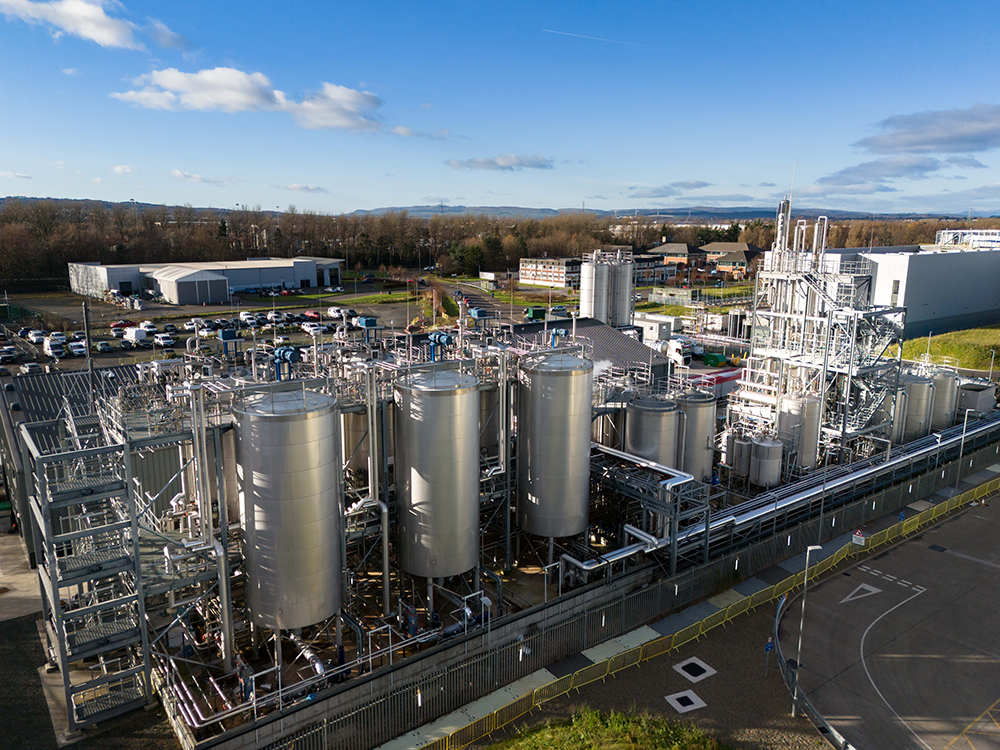Dr Torill Bigg, Chief Carbon Reduction Engineer, Tunley Engineering.
What steps have been taken and what comes next in the fight against climate change?
There has been a lot of discussion recently on the exciting news that the UK is halfway to Net Zero Carbon emissions. We are also halfway through the timeline from the baseline set at 1990 levels to the net zero goal set at 2050 – 30 years have passed and there are 30 years to go. So, the news that UK emissions have halved at the halfway point would seem reason for optimism. It would suggest we are on track. And things can only get better as individuals become ever more aware and ever more environmentally conscious.
Increasing numbers of businesses are measuring, reporting, and reducing their carbon footprints. Households and businesses are replacing cars fuelled by dinosaurs with cars fuelled by electricity. And the UK government seem confident, announcing the latest carbon reduction target of 78% by 2035 – exactly where we would be if today, we are halfway there.
But is it all as it seems?
In 1990’s the UKs GHG (Greenhouse Gas) emissions stood at 794 million tonnes of carbon dioxide equivalent. That is the baseline for the UK’s climate goals, including the net zero target under its legally binding Climate Change Act and its international pledge to the Paris Agreement. That is to say that net zero was formulated in law as cutting greenhouse gas emissions to at least 100% below 1990 levels by 2050.
It has taken 30 years – and a pandemic – for UK emissions to fall 51%. 2020 alone saw a drop in carbon emissions estimated at between 9 and 17%. However, there will be an end to the pandemic, or at least an end to its economic impact. This will inevitably slow our progress to net zero. Indeed, many are predicting an energy use boom. And further deceleration may be caused by the inclusion of international aviation that is currently excluded. Or by inclusion of emissions associated with UK consumption of goods and services imported from abroad. The shipping industry itself has now called for a new global carbon tax.
There are further factors that have brought us to our 51% reduction. These have genuinely reduced carbon emissions. For a start there has been an irreversible move away from coal. In 1990 coal made up two thirds of electricity generation; the power sector was the largest contributor to the nations emissions. Oil power made up 10% of generation, 2% came from renewables.
Then there are CFCs; 1990 is the year that the Montreal Protocol was strengthened to ban CFCs in industrial countries – and by 2010 in developing countries, the economies of many of which have since thrived and indeed become more industrialised.
CFCs (Chlorofluorocarbons) are greenhouse gases much more potent than CO2 itself, and so their removal contributes a much larger proportion from the CO2 equivalent measure. Methane is also a greenhouse gas that is much more potent than carbon dioxide itself. 1990’s landfills lacked the emissions controls of today, so much more methane leaked from landfill, gas fields and the UK coal mines which are now lost.
Notwithstanding the as yet unknown balance of that most potent of greenhouse gases, sulphur hexafluoride (SF6). SF6 is necessary in electricity distribution, such as will be needed for the increasing move over to electricity. SF6 has 22,800 CO2e per kg, primarily because it remains in the atmosphere for 3,200 years; the very quality of stability that makes it so useful as a gas insulator in our electricity substations.
If we are to continue to build on our success with carbon emission reductions to date, perhaps we should not rush to popular solutions. Instead let us step back and make valid and considered choices that will genuinely reduce our carbon footprint as individuals – and so each of us make our contribution to cutting carbon emissions worldwide.
How Net Zero Carbon Differs from Carbon Neutral
As understanding of the climate crisis increases and the harm to ourselves, the environment, business, industry and the economy that will follow, so a desire to not only reduce carbon but to be seen reducing carbon increases.
Two seemingly interchangeable terms often seen are ‘Carbon Neutral’ and ‘Net Zero Carbon’. The two, however, are not the same thing.
Carbon neutral refers to a policy of not increasing carbon emissions and of achieving carbon reduction through offsets. While Net zero Carbon means making changes to reduce carbon emissions to the lowest amount – and offsetting as a last resort. The offsetting is used to counteract the essential emissions that remain after all available reduction initiatives have been implemented.
In both cases Carbon Offsetting removes CO2 from the environment. For it to count, that removal must be permanent and accredited or licensed. Projects can offer a range of benefits. As well as reducing carbon from the atmosphere, offset projects can be selected to also offer social and community benefits. Projects can range from local planting of trees to the funding of projects that empower families in developing countries to reduce their dependence on fossil fuels. Examples include afforestation, reforestation and conservation. Alternative investments can also be made in initiatives that reduce greenhouse gas emissions, such as in cattle feed that reduces the methane output of cows.
Other offsetting projects enhance biodiversity, improve soil quality, food production or rainwater absorption. Projects that benefit soil quality are particularly pertinent to global warming and climate change, as soil is a significant store of carbo, holding three times as much carbon as the atmosphere – and the importance of soil quality has often been overlooked. Food production benefits are relevant too given that crop failure is a significant negative impact of climate change, devastating communities and forcing migration.
There are carbon offset schemes offered that are sold on an arbitrary average carbon footprint basis, as opposed to a quantified footprint. The risk with these is that they offer the temptation of an easy-to-buy option, which not only does not include any emission reductions they also may fail to meet sufficient offset to address the problem of climate change. These are sold on the basis that a true quantification of your carbon footprint can be expensive, time-consuming and complicated but this need not be the case.
Net Zero Carbon Commitments always involve emission reductions. This requires an initial carbon footprint measurement. This is followed by strategic greenhouse gas emission reduction initiatives, the implementation of renewable energy solutions and then carbon offsetting.
The right carbon reduction service can offer you all of these. Furthermore, they can support you in your net zero commitment with ongoing monitoring both of the success of the initiatives but also of emerging technologies for further emission reduction opportunities. These could be in the form of technology, or availability of alternative energy – or internal opportunities from changes in processes, or collaborative opportunities with your supply chain. Potential opportunities could arise with local business partners such as neighbouring manufacturing facilities with whom you may be able to trade reused processed heat or reuse or repurpose materials. For example, could your carbon cardboard waste be shredded to become their packaging material or could waste heat from your processes be used for their hot water or offices?
This sort of methodical, structured and quantified approach leads to more optimised use of resources, lowers energy bills, reduces waste, reduces reliance on the national grid, delivers true reductions in emissions and so true reduced harm to the environment.









